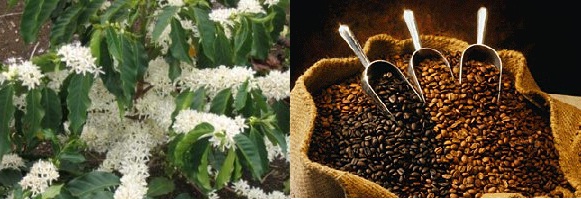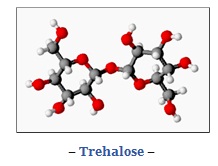Team:Mexico-UNAM-CINVESTAV/Project
From 2010.igem.org
One of the most affected crops in the agriculture of Mexico is coffee. The coffee harvested in Mexico has to be at altitudes between the 900m to 1800m above the sea level. Since coffee is one of the most important plants in Mexican economy, this is a problem we must address (de Camargo; 2008).
At low temperatures some basic cell functions stop working properly. For instance transport of intracellular molecules to the outside of the cell becomes lees eficient; rigidity of membranes increase; the molecular, genetic, and enzymatic kinetics slows down; and the nucleation of ice crystals in the cytoplasm, membrane, and extracellular medium (D’amico, et al.; 2006).
To avoid these problems, some organisms have developed different strategies. Certain organisms, such as tardigrades and some fungi among others, use sugars, specially the disaccharide trehalose. This is beacause it stabilizes the enzymes, proteins and membranes dehydrated. The trehalose interferes in the formation of ice crystals in the lipid and protein binding (Leslie, et al.; 1995).
Other organisms developed diverse proteins that helps in the translation and transcription of the genome. Binding to the RNA or DNA and help them to transcribe or tanslate the information. (D’amico, et al.; 2006) This is the case of the Cold Shock Inducible Proteins (CSIP). These ones overexpressed when the cold shock begans and the bacteria is in the acclimation phase. It's like they are preparing the machinery to growth well at low temperature.
Another strategy that the eukaryotes use is to insert cholesterol molecules in the membrane, also the porkaryotes increased content of large lipid head groups. So the fluidity in both cases increase and the membrane does not become fragile and easy to break. (D’amico, et al.; 2006)
The last strategy, in which we are more interested, is the use of a group of singular proteins called Antifreeze Proteins, which are the model that we’re going to use in our project. In our project, we are trying to combine two of the strategies that Nature has developed to overcome the problem of cell and tissue freezing.
Before you keep going you must know about...
Antifreeze proteins (AFPs) refer to a class of polypeptides, with a polyphyletic ancestry, produced by certain animals (like insects and fishes), plants and fungi that allow them to survive in freezing environments and to help them in maintain the body fluidity.
(Simulation)
The sea water in cold region is freeze at -1.9C owing to dissolved solutes. To the animals don’t freeze at this temperatures, their blood must have lower freezing point. The quality of the AFPs to decrease freezing point is not caused number of solute molecules. Instead of this AFP’s bind to small ice crystals surfaces to inhibit growth and recrystallization of ice in the cell membranes that would be fatal in animals
There are many types of AFPs synthesize by different organisms:
Type I AFP
• Found in winter flounder, longhorn sculpin and shorthorn sculpin.
Type I-hyp AFP (where hyp stands for hyperactive)
• Found in righteye flounders.
Type III AFP
• Found in Antarctic eelpout.
Type IV AFPs
• Are found in longhorn sculpins.
'Type V AFP
• Are the hyperactive AFPs found in insects
Plant AFP
• They have much weaker thermal hysteresis activity when compared to other AFPs.
AFP`s possesses the ability to bind to the ice crystals surface, inhibiting the formation of ice. The growing ice surface becomes energetically unfavorable for further absorption of water molecules proportionately with the surface curvature, leading to the termination of ice growth. This AFP-induced inhibition of ice crystal growth can be detected macroscopically as a depression in the freezing temperature (Tf) of the solution without alteration of the melting temperature (Tm) ([Tf –Tm]). This is called thermal hysteresis. (Chattopadhyay; 2007) (Davies and Hew; 1990)
Various processes are involved in the formation of solid phase of the water, among others, the interaction between ions or molecules leads to the formation of nucleus. The nucleation is the formation of the new centers from which spontaneous growth can occur; this processes determines the size and distribution of produced crystals. Large crystals may eventually be formed from fine crystals by a process called ripening.There are a lot of ions and other particles Inside the cells. So when the temperature decreases the nucleation process arise in the cytoplasm.
All organisms have different mechanisms in order to adapt to variable temperatures. Escherichia coli shows a mechanism denominated Cold Shock Response, which is important at low temperatures when the production of cytoplasmic proteins becomes blocked and E. coli cannot growth (Yamanaka; 1999).
The CSR consists in the expression of a specific set of proteins called cold shock proteins (Csp’s) to overcome this translational block. The cold shock protein A (cspA), which is the one we will use because is the one most studied protein of the family, has tree control processes involved with the system. The first control point is the auto regulation system Cold Box implicated with the cold shock protein. The second one is the 5’UTR mRNA region capability to become unstable at 37ºC. And the last one is at traductional level with the two ribosomes binding sites and an anti-DB sequence in the ribosome which allow to synthesize proteins at 15ºC or a little less (Yamanaka; 1999). But, how the expression of csp’s genes is able while the synthesis of most cytoplasm proteins is blocked? First, the cspA mRNA transcription is constitutive both at 37°C and 15°C, but the cold shock proteins expression is only present at low temperatures. This means that the mRNA is synthesized but the expression of proteins depends on the cspA mRNA sequence factors:
Promoter- cold box- 5’UTR- SD- DB
Promoter: The promoter consists of 50 bases. This promoter is active at both 37ºC and 15ºC but is more efficient at 15ºC than other promoters because it has an important UP element AT-rich that is report to be recognized by the subunit of RNA polymerase and which give it a high promoter activity.
Cold box: Is an important region of the 5’ UTR region, which may form a stable stem-loop structure and is implicated in the auto regulation of the cspA system.
5’ UTR: Is a region that consists of mostly 159 bases and is downstream the promoter. This region make the cspA mRNA unstable at 37º C with an average half-life of less than 12 seconds, but more stable at 15°C with an average half-life of 20 minutes and improve the translation at low temperature. In here there is an RNAse cleavage site immediately upstream the Shine-Dalgarno sequence that is considered to be responsible for this unstable messenger stage.
Shine-Dalgarno (SD) sequence: Is a four-nucleotide sequence that the ribosome uses to bind the mRNA and is common for many messengers also the ones that we use in the IGEM competition. (AAGG)
DB sequence: Is a fourteen nucleotide sequence that is in the mRNA and is complementary to a region found in the 16S rRNA named as anti-DB sequence , which gives the feature of good translation at low temperature because it function as an extra messenger ribosome binding site. In this way the ribosome can anchor the SD sequence and the DB sequence as a two ribosome-binding site to permit a great cleavage between the ribosome and the messenger. (Yamanaka; 1999) (Baneyx and Mujacic; 2002)
Also the cell has many other proteins that are involved in the protein, DNA or RNA stabilization at low temperatures: RecA, which is involved in recombination and induction of the cold shock response; H-NS, a nucleotide-associated DNA-binding protein, which is required for optimal growth at low temperature; GyrA, the subunit of the topoisomerase DNA gyrase, which helps to uncoil the double helix of the DNA; NusA, which is involved in termination of transcription; PNP, which is an exoribonuclease; and Hsc66, a Hsp70 homologue to cold (Thieringer, et al; 1998) (Yamanaka; 1999).
There is evidence that the CSIP's are expressed just when the cold shock occur. Then the presence of these decrease when the growth phase is more closer and next is minimal again when the growth phase begins. In the case of non-CSIP's the expression is normal at physiological temperature. Then when the temperature downshifts the expresion decreases and stays low in the acclimation phase. When the growth phase starts the non-CSIP's increase their expresion but stays in a low rate (Horn et al.; 2007)
IMAGE From Article
 "
"














